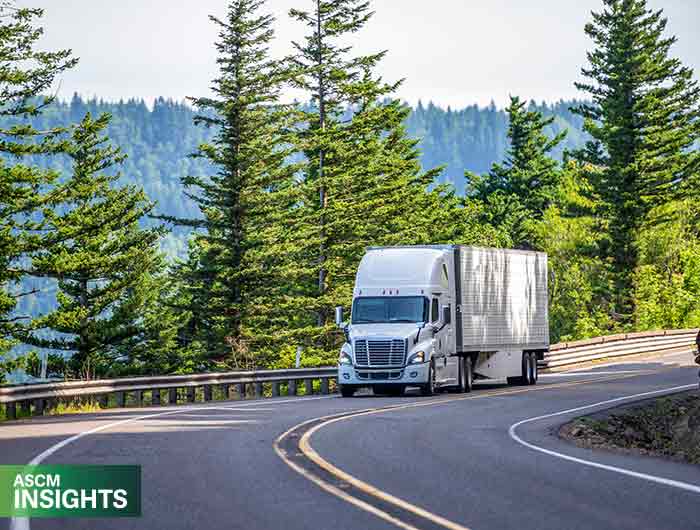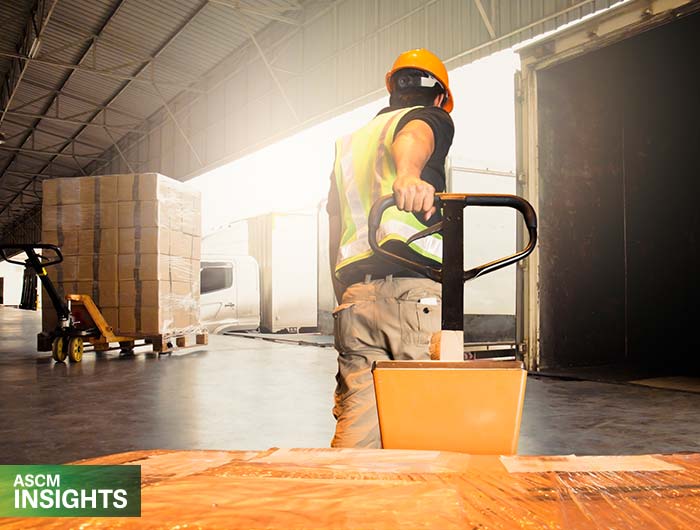The circular economy emphasizes minimizing waste and maximizing the lifespan of products and materials. By prioritizing reuse, repair and recycling, circularity seeks to achieve economic growth while minimizing the consumption of finite resources. This involves shifting from a linear model to a cyclical one, where materials are kept in use for as long as possible and waste is minimized or eliminated altogether.
The circular economy is gaining significant traction as a response to pressing environmental problems associated with transportation and logistics. Key challenges include:
- Consumption of fossil fuels during transportation
- Waste generated from packaging and transportation equipment
- Significant increase in e-commerce product returns, which is severely adding to transportation emissions, wasted packaging materials and the potential for returned items to end up in landfills
By embracing circular economy principles, the transportation and logistics sector can optimize routes to minimize empty miles and fuel consumption, apply renewable energy sources for vehicles and operations, promote the use of reusable and recyclable packaging materials, and facilitate the efficient return and reuse of goods. Each of these activities meaningfully contributes to a more sustainable future while creating business opportunities — for instance, developing new services such as product repair and refurbishment and facilitating the reuse and recycling of transportation equipment.
One of the primary challenges lies in the complexity of managing reverse flows. Integrating reverse logistics into existing networks requires careful planning and coordination, including the development of efficient collection systems, sorting facilities and remanufacturing centers. Furthermore, the increasing volume and diversity of materials involved in circular economy flows pose significant logistical challenges, demanding flexibility, adaptability and robust data management systems.
Implementable steps
The circular economy necessitates a significant shift in traditional transportation and logistics models. It requires new infrastructure, processes and technologies. Following are several proven strategies to consider:
- First and foremost, prioritize sustainability in all operations. Integrate sustainability considerations into all aspects of transportation and logistics operations, from vehicle selection and fuel choices to warehouse design and waste management.
- Digitization plays a crucial role in enabling circular logistics. Technologies such as the internet of things (IOT) and blockchain can track product life cycles, improve visibility, optimize resource use, and facilitate collaboration across the supply chain. Use advanced technologies such as artificial intelligence and machine learning to optimize routes, minimize empty miles and reduce fuel consumption.
- Invest in intermodal transportation and infrastructure. Begin by encouraging the use of rail, water and other more sustainable modes of transport whenever possible. Then, develop and improve infrastructure — especially elements involved with the collection, sorting and processing of goods and materials.
- Successful implementation of circular economy principles requires collaboration among all stakeholders, including transportation and logistics providers, manufacturers, policymakers, and partners. To develop and implement circular economy solutions, prioritize data sharing and open communication to identify opportunities, improve resource use and ensure the smooth flow of goods.
- The last mile of delivery presents unique challenges in a circular economy. To achieve efficient and sustainable collection and return of products, look to micro-mobility solutions, drone delivery and the development of local collection points.
- Fostering a culture of sustainability within the transportation and logistics industry is crucial. This includes educating employees, investing in training programs and setting ambitious sustainability goals.
By embracing innovation, fostering collaboration and prioritizing sustainability, providers can play a vital role in building a more sustainable and resilient future for our planet. This transformation will require significant investment in technology, infrastructure and human capital, but the potential rewards make it a critically important endeavor.
Logistics challenges, increasing customer demands, and rapid technology changes are transforming supply chains. The CLTD certification provides the expertise to manage these complexities and position yourself as a logistics expert in your organization.



